Abstract
Hapten—carrier complexes were prepared with the 2,4-dinitrophenyl group (DNP) as a hapten and bovine serum albumin (BSA), bovine gamma-globulin (BGG) (heterologous), mouse immunoglobulin (MIg) (isologous) and polyvinyl pyrrolidone (PVP) (thymus-independent) as carriers. All complexes could be used for priming, independent of the type of carrier or the number of DNP groups. No in vitro response, however, could be obtained with any of the DNP—PVP complexes or with the complexes with a low hapten/carrier ratio (about 3). Priming with carriers alone resulted in some in vitro activity on challenge with the homologous DNP—carrier complexes, but this response was less than after priming with one of the homologous DNP—carrier complexes. Cross-reactions between DNP—MIg, DNP—BGG and DNP—BSA complexes could be obtained. In almost all instances in vitro challenge with BSA with the highest number of DNP groups (DNP28—BSA) resulted in the highest activity. Inhibition of the in vitro reaction could to a certain extent be obtained with ε-DNP—L-lysine. These experiments suggest that: (1) for priming, the hapten/carrier ratio is of no importance and the influence of the type of carrier is low; (2) in vitro stimulation can only be obtained with complexes with a high hapten—carrier ratio; when this ratio approaches a maximum (DNP28—BSA) the type of the carrier used by priming seems to be irrelevant; (3) the data from these experiments, from cross-reactions and from inhibition reactions suggest that the stimulating activity of DNP28—BSA is due to the DNP groups, but the activity of complexes such as DNP16—BSA, DNP—BGG and DNP—MIg is at least partly due to the `new antigenic determinant' (NAD) or DNP—NAD groups.
Full text
PDF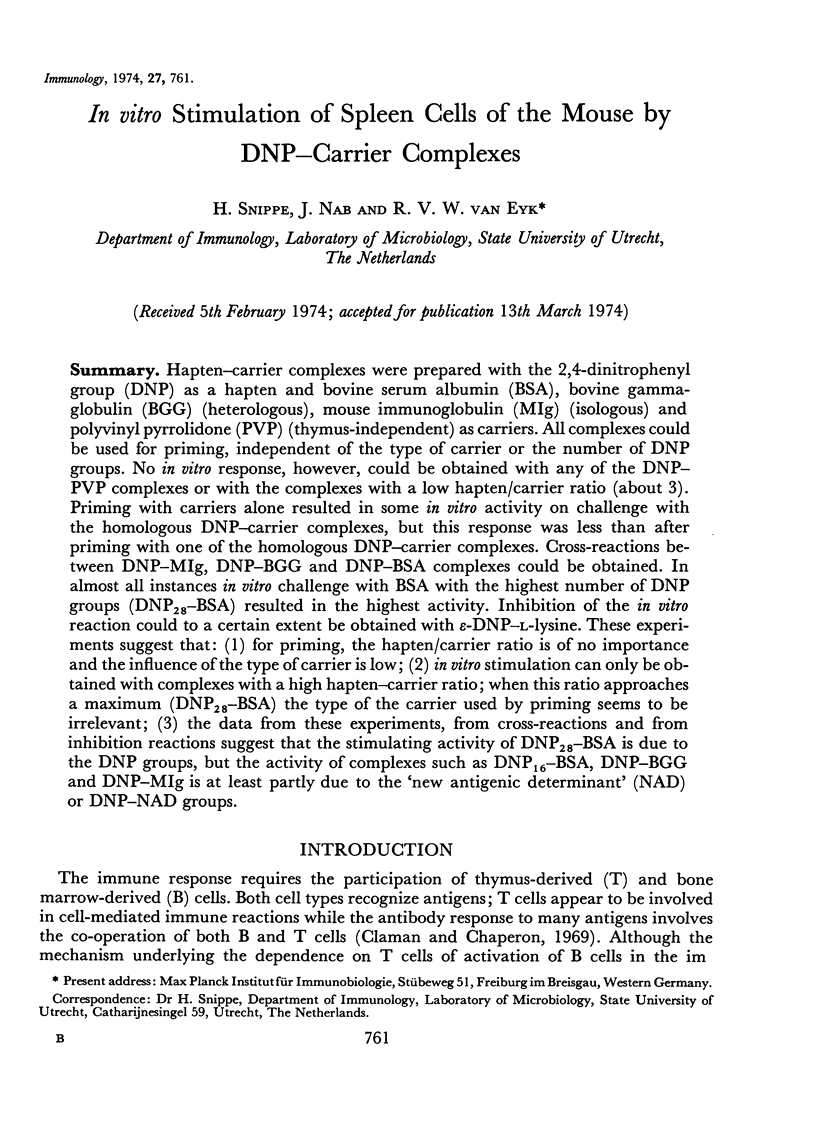

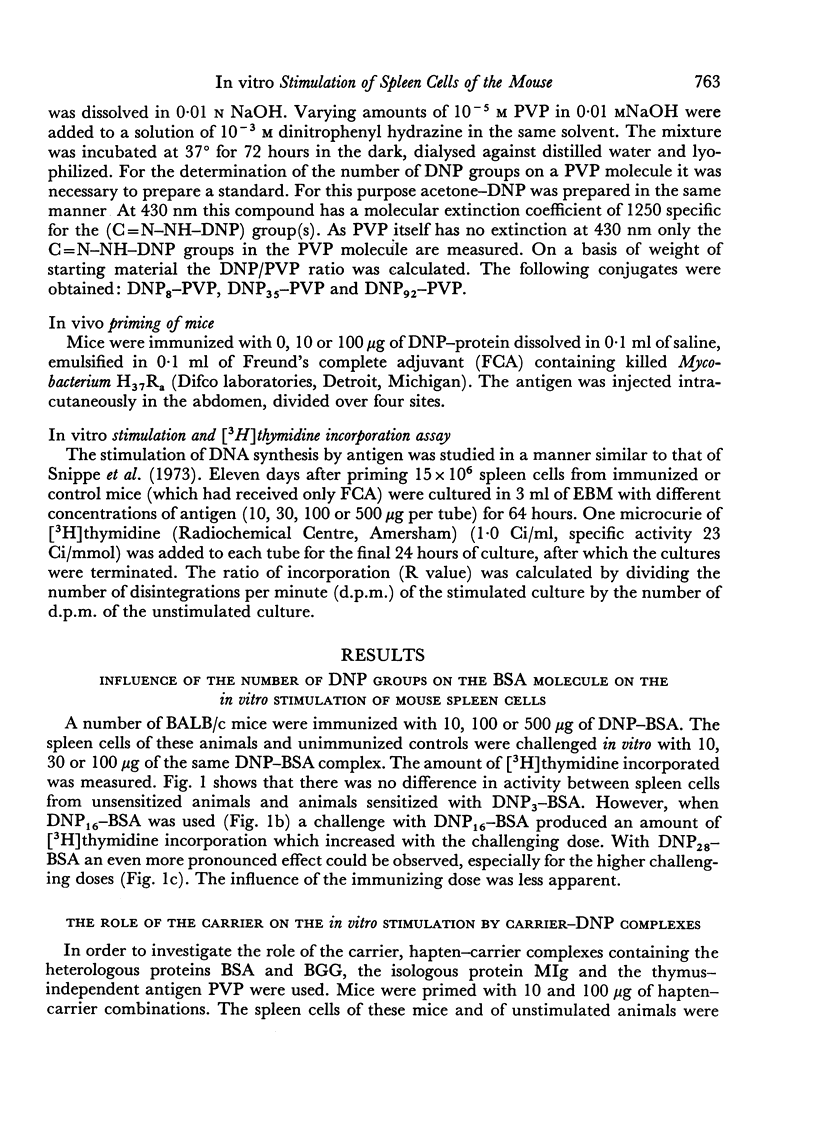
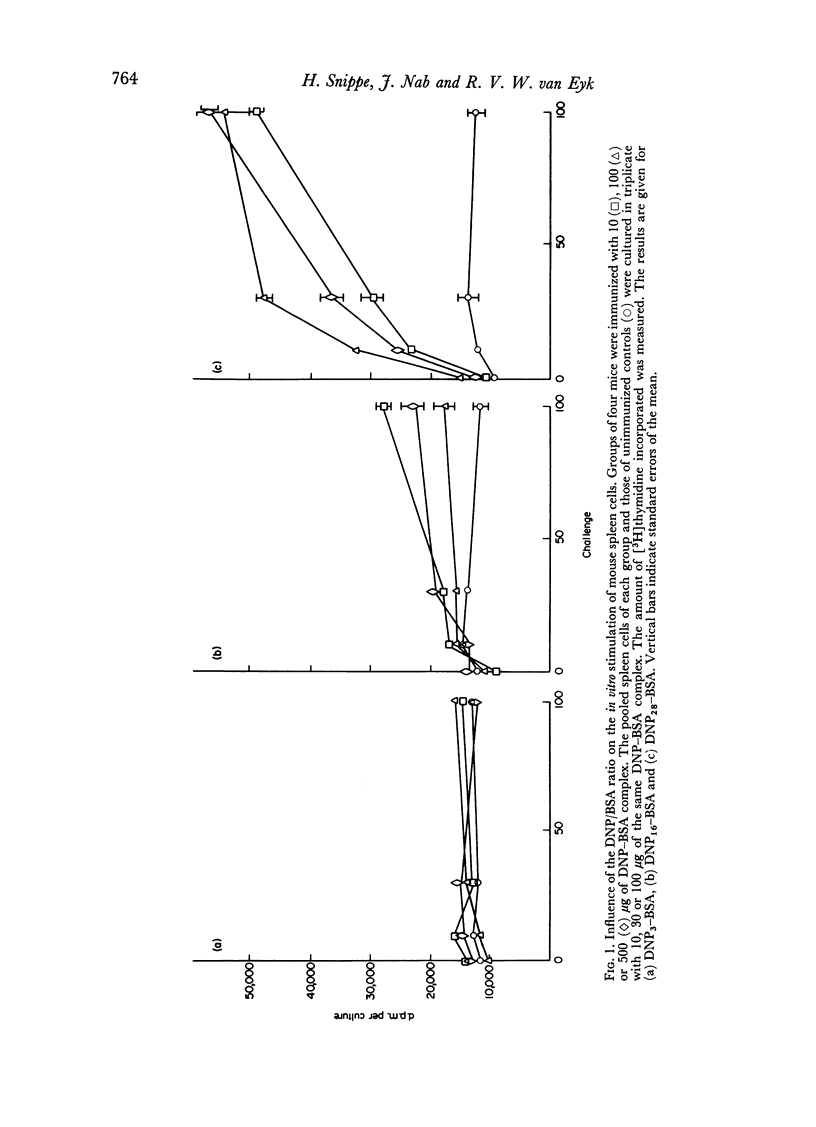

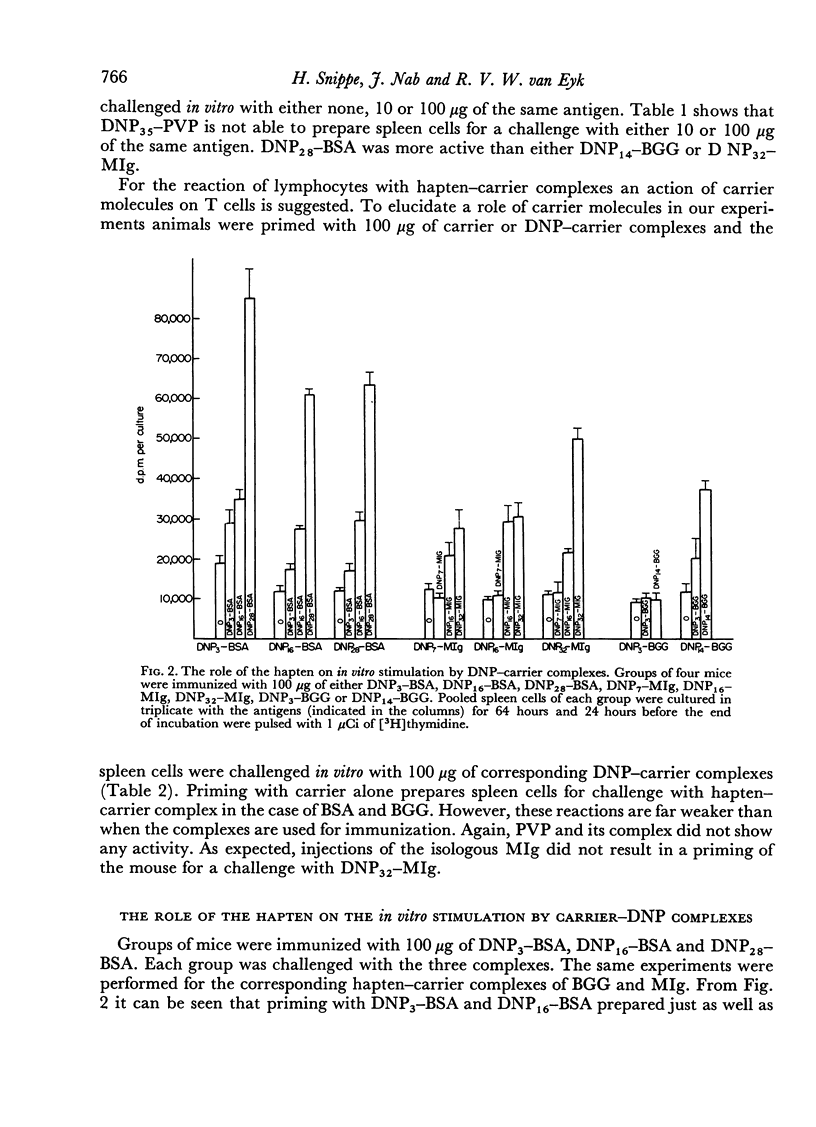
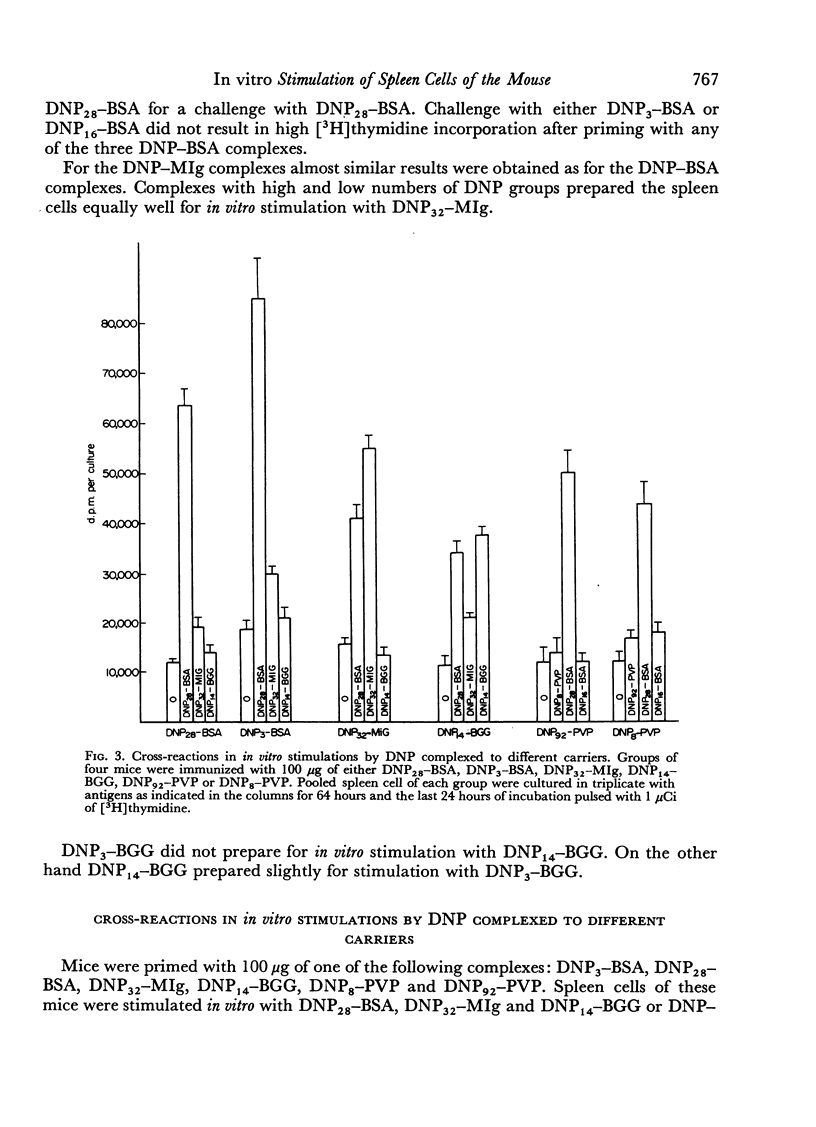
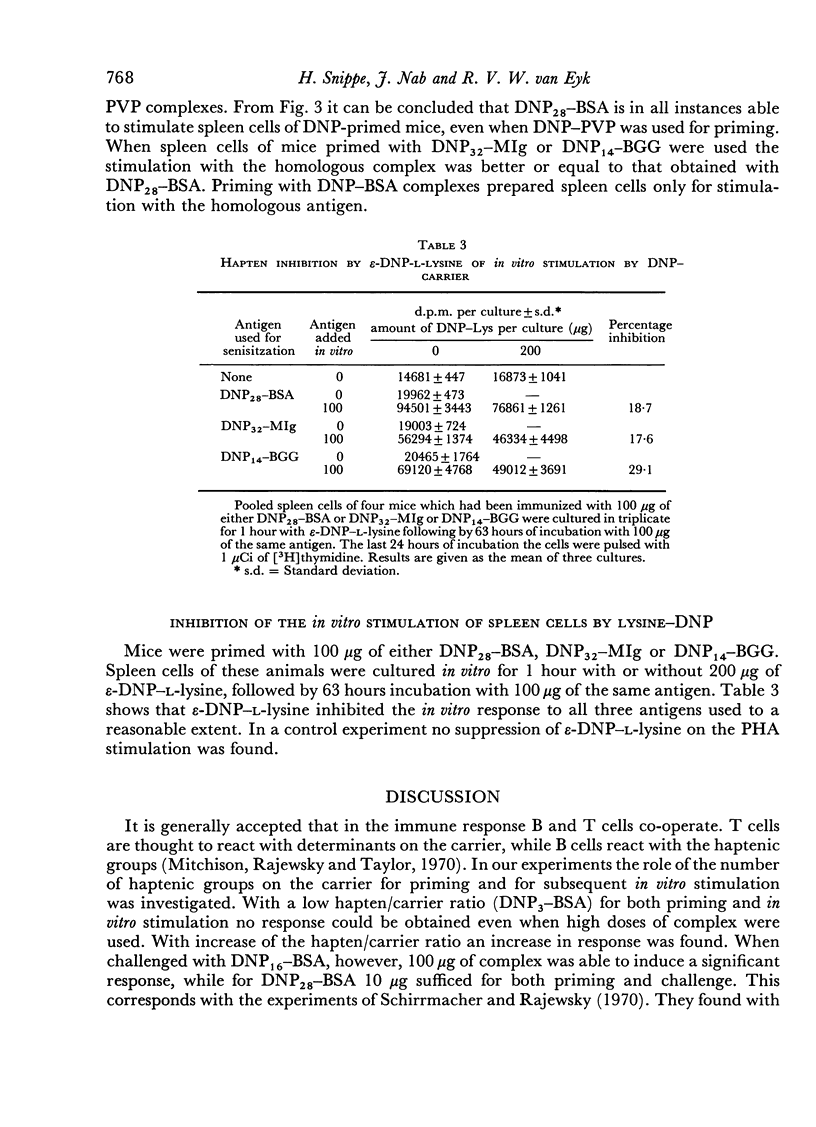
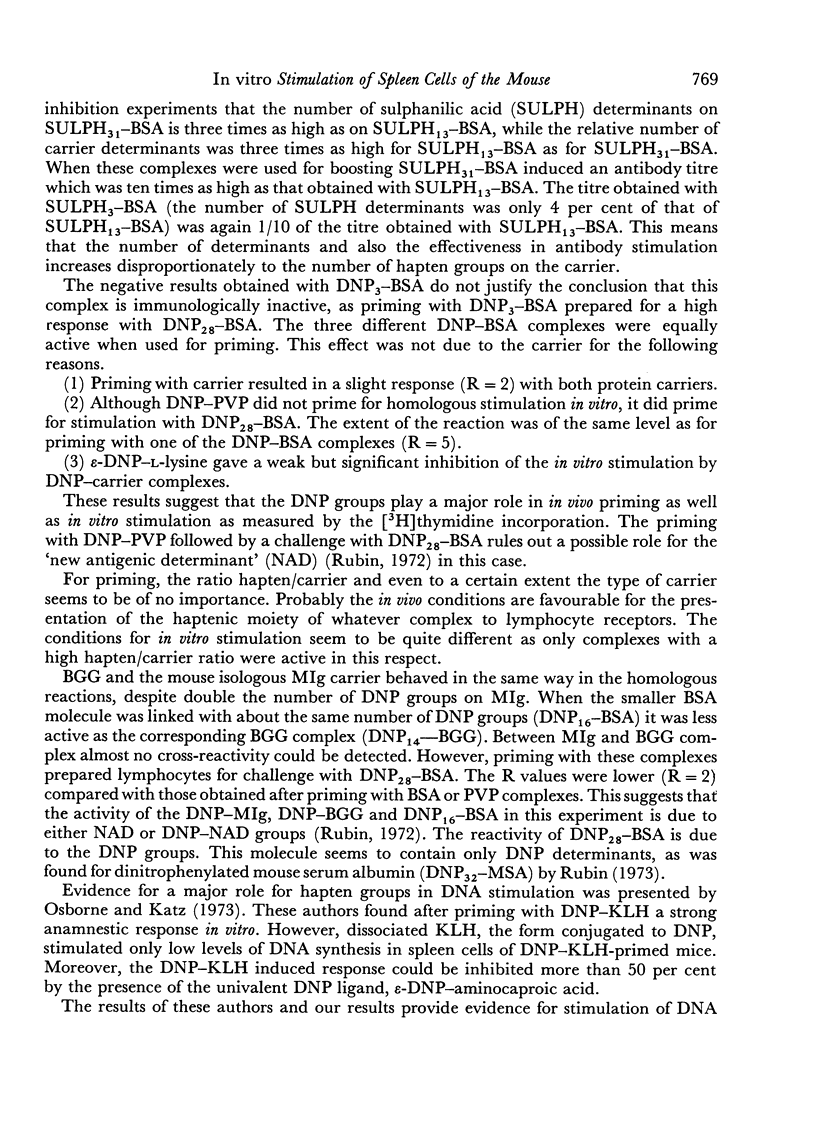
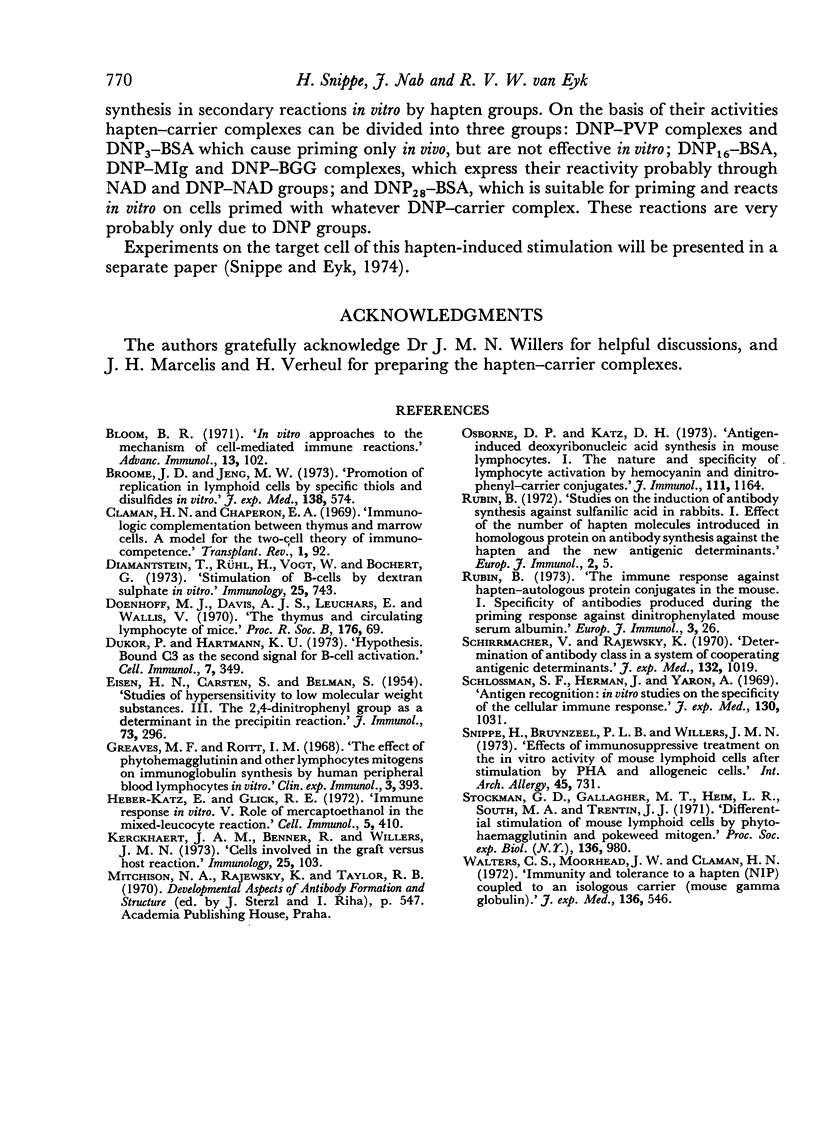
Selected References
These references are in PubMed. This may not be the complete list of references from this article.
- Broome J. D., Jeng M. W. Promotion of replication in lymphoid cells by specific thiols and disulfides in vitro. Effects on mouse lymphoma cells in comparison with splenic lymphocytes. J Exp Med. 1973 Sep 1;138(3):574–592. doi: 10.1084/jem.138.3.574. [DOI] [PMC free article] [PubMed] [Google Scholar]
- Diamantstein T., Rühl H., Vogt W., Bochert G. Stimulation of B-cells by dextran sulphate in vitro. Immunology. 1973 Oct;25(4):743–747. [PMC free article] [PubMed] [Google Scholar]
- Doenhoff M. J., Davies A. J., Leuchars E., Wallis V. The thymus and circulating lymphocytes of mice. Proc R Soc Lond B Biol Sci. 1970 Oct 13;176(1042):69–85. doi: 10.1098/rspb.1970.0035. [DOI] [PubMed] [Google Scholar]
- Dukor P., Hartmann K. U. Hypothesis. Bound C3 as the second signal for B-cell activation. Cell Immunol. 1973 Jun;7(3):349–356. doi: 10.1016/0008-8749(73)90199-8. [DOI] [PubMed] [Google Scholar]
- EISEN H. N., CARSTEN M. E., BELMAN S. Studies of hypersensitivity to low molecular weight substances. III. The 2,4-dinitrophenyl group as a determinant in the preciptin reaction. J Immunol. 1954 Nov;73(5):296–308. [PubMed] [Google Scholar]
- Greaves M. F., Roitt I. M. The effect of phytohaemagglutinin and other lymphocyte mitogens on immunoglobulin synthesis by human peripheral blood lymphocytes in vitro. Clin Exp Immunol. 1968 Jun;3(5):393–412. [PMC free article] [PubMed] [Google Scholar]
- Heber-Katz E., Click R. E. Immune responses in vitro. V. Role of mercaptoethanol in the mixed-leukocyte reaction. Cell Immunol. 1972 Nov;5(3):410–418. doi: 10.1016/0008-8749(72)90067-6. [DOI] [PubMed] [Google Scholar]
- Kerckhaert J. A., Benner R., Willers J. M. Cells involved in the graft-versus-host reaction in vitro. Immunology. 1973 Jul;25(1):103–110. [PMC free article] [PubMed] [Google Scholar]
- Osborne D. P., Jr, Katz D. H. Antigen-induced deoxyribonucleic acid synthesis in mouse lymphocytes. I. The nature and specificity of lymphocyte activation by hemocyanin and dinitrophenyl carrier conjugates. J Immunol. 1973 Oct;111(4):1164–1175. [PubMed] [Google Scholar]
- Rubin B. Studies on the induction of antibody synthesis against sulfanilic acid in rabbits. I. Effect of the number of hapten molecules introduced in homologous protein on antibody synthesis against the hapten and the new antigenic determinants. Eur J Immunol. 1972 Feb;2(1):5–11. doi: 10.1002/eji.1830020103. [DOI] [PubMed] [Google Scholar]
- Rubin B. The immune response against hapten-autologous protein conjugates in the mouse. I. Specificity of antibodies produced during the primary response against dinitrophenylated mouse serum albumin. Eur J Immunol. 1973 Jan;3(1):26–32. doi: 10.1002/eji.1830030107. [DOI] [PubMed] [Google Scholar]
- Schirrmacher V., Rajewsky K. Determination of antibody class in a system of cooperating antigenic determinants. J Exp Med. 1970 Nov;132(5):1019–1034. doi: 10.1084/jem.132.5.1019. [DOI] [PMC free article] [PubMed] [Google Scholar]
- Schlossman S. F., Herman J., Yaron A. Antigen recognition: in vitro studies on the specificity of the cellular immune response. J Exp Med. 1969 Nov 1;130(5):1031–1045. doi: 10.1084/jem.130.5.1031. [DOI] [PMC free article] [PubMed] [Google Scholar]
- Snippe H., Bruijnzeel P. L., Willers J. M. Effects of immunosuppressive treatment on the in vitro activity of mouse lymphoid cells after stimulation by PHA and allogeneic cells. Int Arch Allergy Appl Immunol. 1973;45(5):731–743. doi: 10.1159/000231072. [DOI] [PubMed] [Google Scholar]
- Stockman G. D., Gallagher M. T., Heim L. R., South M. A., Trentin J. J. Differential stimulation of mouse lymphoid cells by phytohemagglutinin and pokeweed mitogen. Proc Soc Exp Biol Med. 1971 Mar;136(3):980–982. doi: 10.3181/00379727-136-35410. [DOI] [PubMed] [Google Scholar]
- Walters C. S., Moorhead J. W., Claman H. N. Immunity tolerance to a hapten (NIP) coupled to an isologous carrier (mouse gamma globulin). J Exp Med. 1972 Sep 1;136(3):546–555. doi: 10.1084/jem.136.3.546. [DOI] [PMC free article] [PubMed] [Google Scholar]


